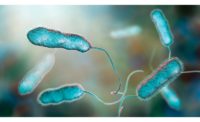It is essential that water treatment facilities use the correct valves in their systems. Doing so ensures that piping systems operate consistently, effectively and safely, which prevents unnecessary maintenance.
This is true for all types of water treatment, from controlling and regulating dirty sea or river water to producing high-purity water for pharmaceutical industries. Common valves used for water treatment include gate valves, butterfly valves, check valves and ball valves. Each valve has its specific uses and conditions it can operate under. To ensure the correct valve is used, it is important to know the applications each valve is suited to handle.
Common valves used for water treatment: There are various types of valves used in water treatment applications. Each is designed to work in specific ways for different purposes, and each has both benefits and drawbacks. The following are some of the most common valve types.
Gate valves
Gate valves are considered to be full-stop valves. This means that in the “on” position, the valve is completely open on the inside, allowing material to flow through freely. When the valve is turned to the “off” position, the flow of water through the valve is totally cut off by a gate closure within the valve. Gate valves are designed to be positioned either on or off, which means they shouldn’t be used to adjust the pressure of the water flow because that will cause them to wear down too quickly.
Gate valves work well within systems of high temperature and pressure. They often are utilized within manufacturing systems, pharmaceutical systems, gas and oil applications, and automotive and marine systems. While smaller gate valves may be cost-effective, larger ones can be costly.
Butterfly valves
Butterfly valves are used to isolate or regulate the flow of water. They have a round disc that is mounted on a shaft in the center of the valve. The disc is a closing mechanism that rotates on the shaft to open or close the valve. Typically, butterfly valves are used in wastewater treatment systems. They offer a cost-effective option in larger sizes because they are lighter and more compact than some other valves.
Though butterfly valves are fairly economical, they don’t handle slurry applications effectively. They have a tendency to foul up when they are used on sludges with solids or stringy materials.
Check valves
Check valves, also known as non-return valves, are designed to prevent backflow in piping systems. This ensures that the system operates properly, and that damage is prevented from happening. A check valve uses the pressure from the forward-flowing liquid to open the valve, while any reversal of the flow will close it. In other words, a check valve allows the liquid to flow fully unobstructed in one direction, and automatically closes as the pressure is reduced or reversed.
Check valves are used in many different applications, including water treatment systems. They are ideal in systems where preventing backflow is important, and in which there is continuous flow of fluid. They are not effective in systems with pulsating flow.
Ball valves
Ball valves have a circular closure component (the ball) that is placed into a seat within the valve. That allows the valve to be opened or closed with only a quarter turn. It also ensures a uniform seal within the valve.
Ball valves can withstand high pressure, temperature and velocity flows, making them useful in piping systems on ships, within safety protection services, and among chlorine manufacturers. They have a long service life and are easy to use. However, they tend to be difficult to clean, so they are not recommended for use in pharmaceutical, bioprocessing or food and drink systems.
Knife gate valves
Knife gate valves work similarly to gate valves, but the gate has a knife edge that has the ability to cut through accumulated solids such as scale, slurries and surface buildups. They work well in high-flow systems, effectively handling abrasive slurries or sludge applications.
Knife gate valves are not recommended for low-pressure applications. They are not able to provide bubble-tight shutoff or cavity formation, which means they are not useful in high-purity applications.
Globe valves
Globe valves are usually spherical in shape, which is where they get the name. They are made of two halves that are separated by an internal baffle. There is an opening that forms a seat onto which a movable plug, also called a disk, can be screwed in to shut off the flow. The plug is connected to a stem with a handwheel for operation.
Globe valves are used to regulate the flow of a liquid in a pipeline. They are effective for precise throttling in water treatment applications; however, they are not able to handle slurries. Globe valves are typically more expensive than other options.
Shutoff valves
Shutoff valves are valves that shut off the flow within a piping system. In water treatment systems, all pumps and check valves need to have a shutoff valve that allows isolation of the system and maintenance of the lift station components. Shutoff valves are available in various types for use in different applications. They have been designed to prevent clogging when the liquid contains grit.
Plug valves
Plug valves work like ball valves, except instead of a ball there is a tapered plug that controls the water flow. They are typically used in systems that carry sludge, raw sewage and grit. Plug valves seal well and have a tight shutoff, making them durable and reliable. However, they tend to be heavy, requiring more space in the piping system.
Valves broken down by water treatment applications: The following are some of the most common water treatment applications and how valves are used within them.
Wastewater treatment facilities
The wastewater process is typically segregated into three phases: primary, secondary and tertiary. During the primary stage of wastewater process, ball valves or plug valves are used because it is necessary to have valves that are able to handle slurries, as the wastewater at this point still has sediment, solids and sludge. During the secondary stage, power-actuated control valves, wafer butterfly valves and check valves are used as the remaining organic matter is removed using aeration systems for which these types of valves are effective. During the tertiary stage, check valves, shutoff valves, butterfly valves and ball valves may be used because, by this stage, there is no longer sediment in the wastewater.
Seawater desalination
Desalination is the process of making water suitable for human and industrial use from saline water such as seawater. The liquids used in the desalination process can be corrosive, so it’s important to use durable valves that are made of materials that are resistant to corrosion. Butterfly valves are often used in the seawater inlet, filtration and supply stages, while diaphragm valves are found in the water pre-treatment and post-treatment stages of the process.
Particle filtration
Particle filtration is used to separate water from solid matter such as mud, sand, plant residues and other substances, as well as for cleaning water from lakes, rivers and wells. Typically, butterfly valves are used in this process for water with a lower amount of contamination.
Industrial water cooling circuit
In a cooling circuit for industrial water, isolation or control valves are typically used. In systems with large-diameter pipes, that often means that high-performance butterfly valves are used.
Sewage clarification
Domestic sewage clarification systems use basins in the process. Butterfly valves can be installed underwater at the sewage inlet and outlet.
How to choose the right valve
Using the right valves in water treatment systems ensures proper overall operation. The conditions the valve will encounter determines which type of valve is necessary. Gate valves are ideal for applications in which high pressures and temperatures are experienced. Butterfly valves are not suited for slurry applications and are designed to perform under conditions where no slurries are present, such as in the later stages of the wastewater treatment process or in seawater inlets.
Check valves are designed to encourage continuous flow of liquids by preventing backflow. For each type of valve, it is important to note the conditions it can handle and the common applications it is used in. For water treatment, there is a vast array of valve types to choose from, allowing treatment systems to perform effectively and consistently.





